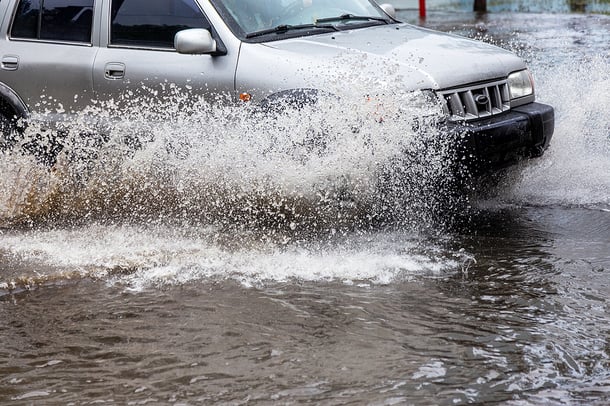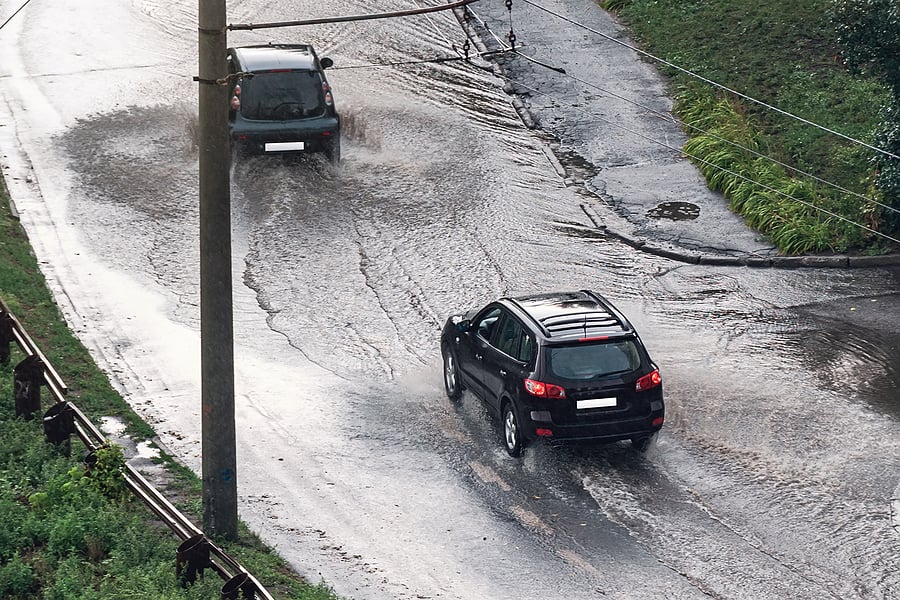Knowledge Center

The 2022 Atlantic hurricane season is here. Each year, this six-month period officially lasts from June 1st to November 30th, with peak hurricane activity typically occurring in September. While these hurricanes and tropical storms pose the biggest threat to states along the Gulf Coast, others are still susceptible. Many deal with the residual effects of these southern and coastal storms, like torrential rain, intense winds, and flooding—all of which can make a real mess of the roads. Here are some steps you can take for safe driving in a hurricane or hurricane-like conditions.
Avoid Driving Altogether if Possible
The first thing to note about driving in a hurricane is that you shouldn’t do it if you don’t have to. This rule of thumb applies to any severe weather condition. Just as you would in a blizzard or ice storm, ask yourself if you really need to be driving or if it’s something that can wait. If you don’t absolutely have to be out on the roads, you’re better off avoiding the risk outright. Rain and wind can be just as much of a threat as snow and ice. 
Tips for Driving in Heavy Rain, Gusty Winds, and Flood Conditions
- Pack your patience and drive slower. It might go without saying, but you’ll need to reduce your speed when driving in stormy conditions. Doing so will help lower your risk of losing control of the vehicle and may help prevent you from hydroplaning.
- Increase your following distance from the car in front of you. Always give yourself extra buffer room in between vehicles in case you need to come to a sudden stop or the rain impacts your braking ability.
- Pump your brakes regularly. Driving through water wets your brakes, thus decreasing the car’s stopping power. Gently pump your brakes from time to time during the commute to test that they’re working and to help them dry off quicker.
- Never drive through high water or deep puddles. Not only is it easy for cars to be swept off the road in even a foot of moving water, but driving through this much water can also cause severe damage to your vehicle. It can stall your engine, leaving you stuck and with pricey—or potentially irreparable—problems. If you come across high water on the road, stop and seek an alternate route.
- Be vigilant around larger vehicles. Tractor trailers are especially prone to having difficulty staying in their lanes during high winds. You should also beware of spots where winds are typically strongest, like bridges, overpasses, and wide-open areas.
- Keep an eye out for hazards on the road. Downed electrical wires, fallen trees, scattered debris, and other people or cars are all things you might encounter on your route. Stay alert and keep your hands firmly on the steering wheel so you can react appropriately.
Whether it's torrential rain, heavy snow, dense fog, or even driving in a hurricane, weather conditions can cause all kinds of serious dangers on the road. Though no one can control the forecast, World Insurance can control your accident preparedness. No matter what Mother Nature brings, you want peace of mind knowing your auto insurance policy has you covered.
This article is not intended to be exhaustive, nor should any discussion or opinions be construed as legal advice. Readers should contact legal counsel or an insurance professional for appropriate advice.
This article is not intended to be exhaustive, nor should any discussion or opinions be construed as legal advice. Readers should contact legal counsel or an insurance professional for appropriate advice.
About the Author
We’re ready to help you
protect what matters most
Discuss your options for protecting your reputation and your business.

